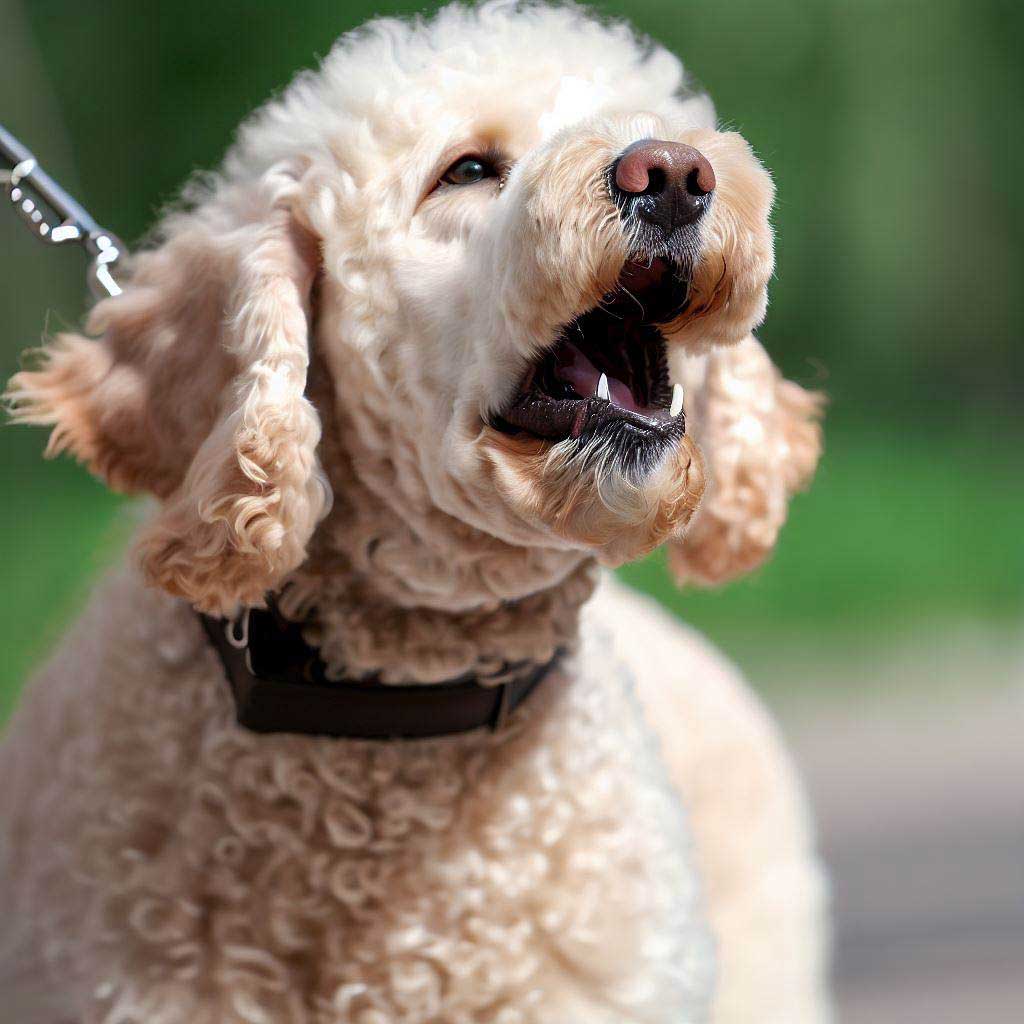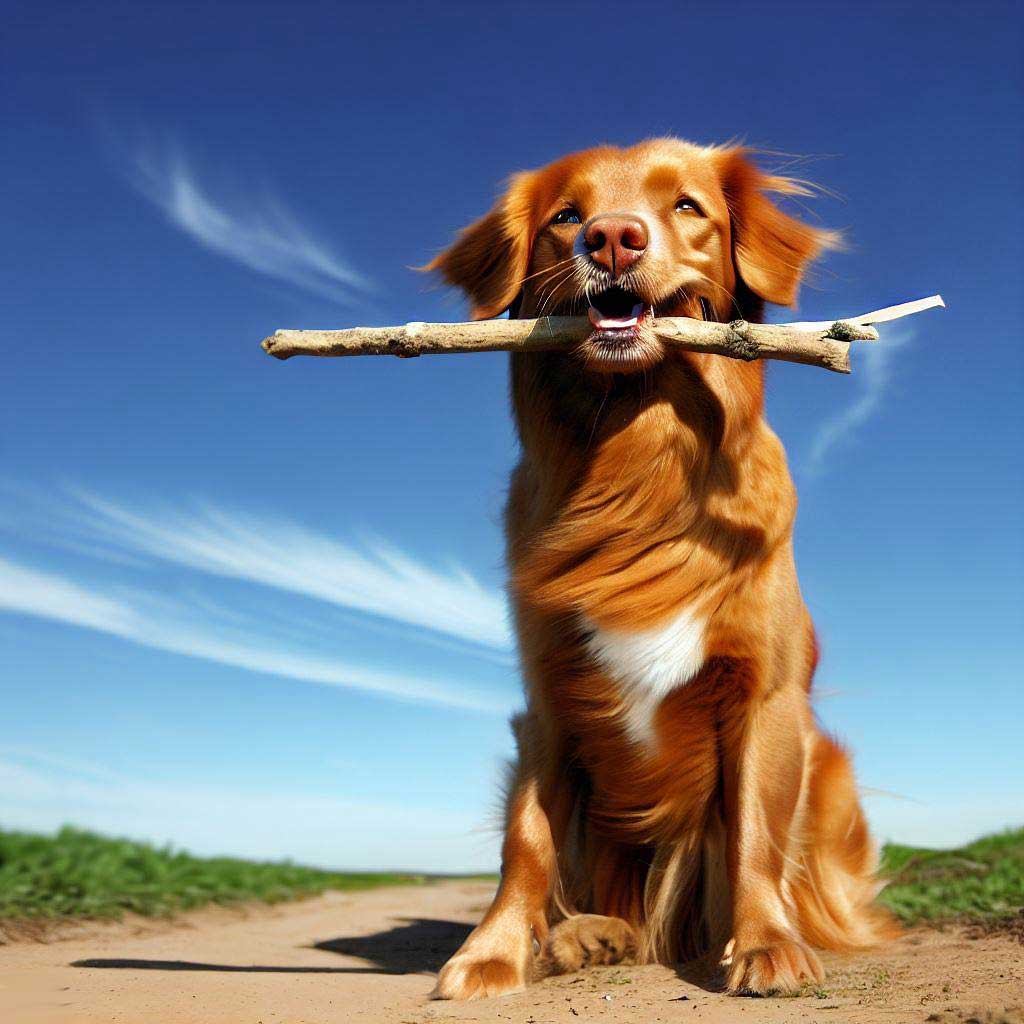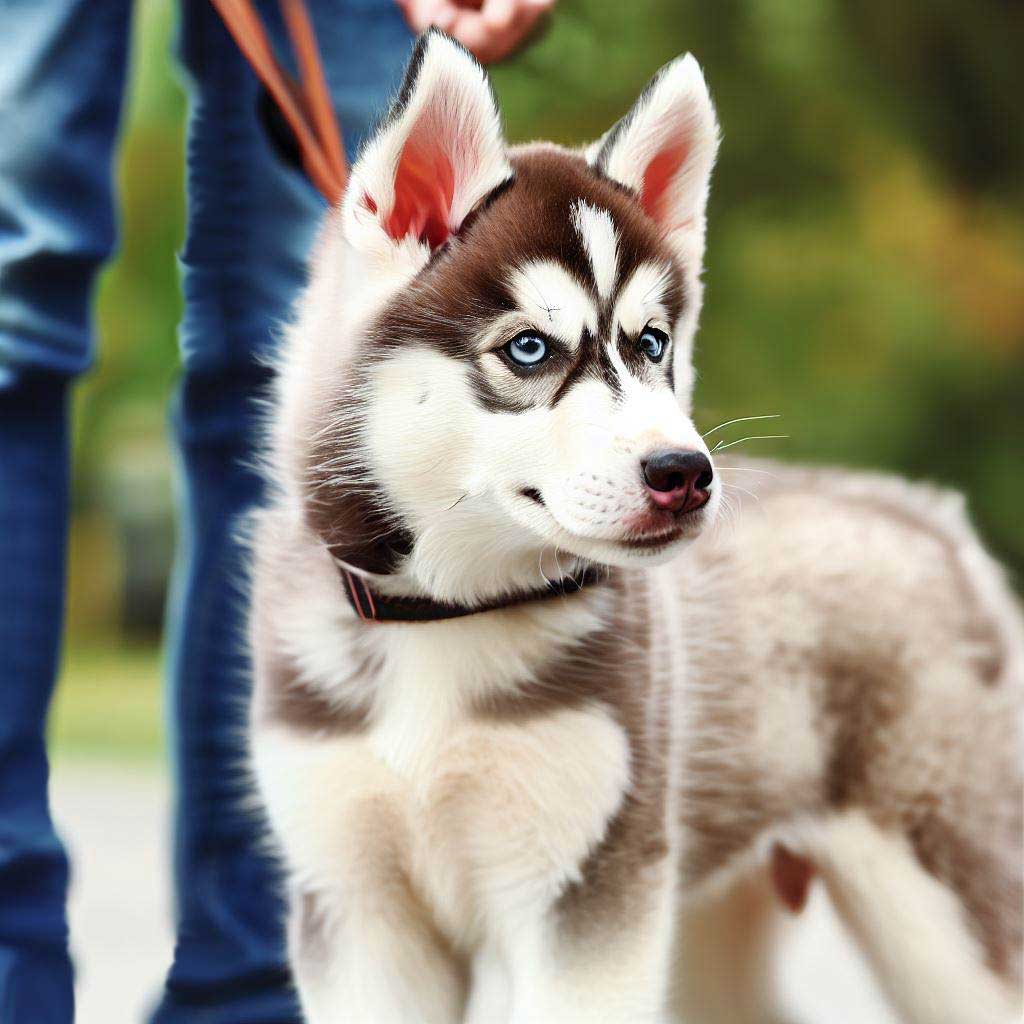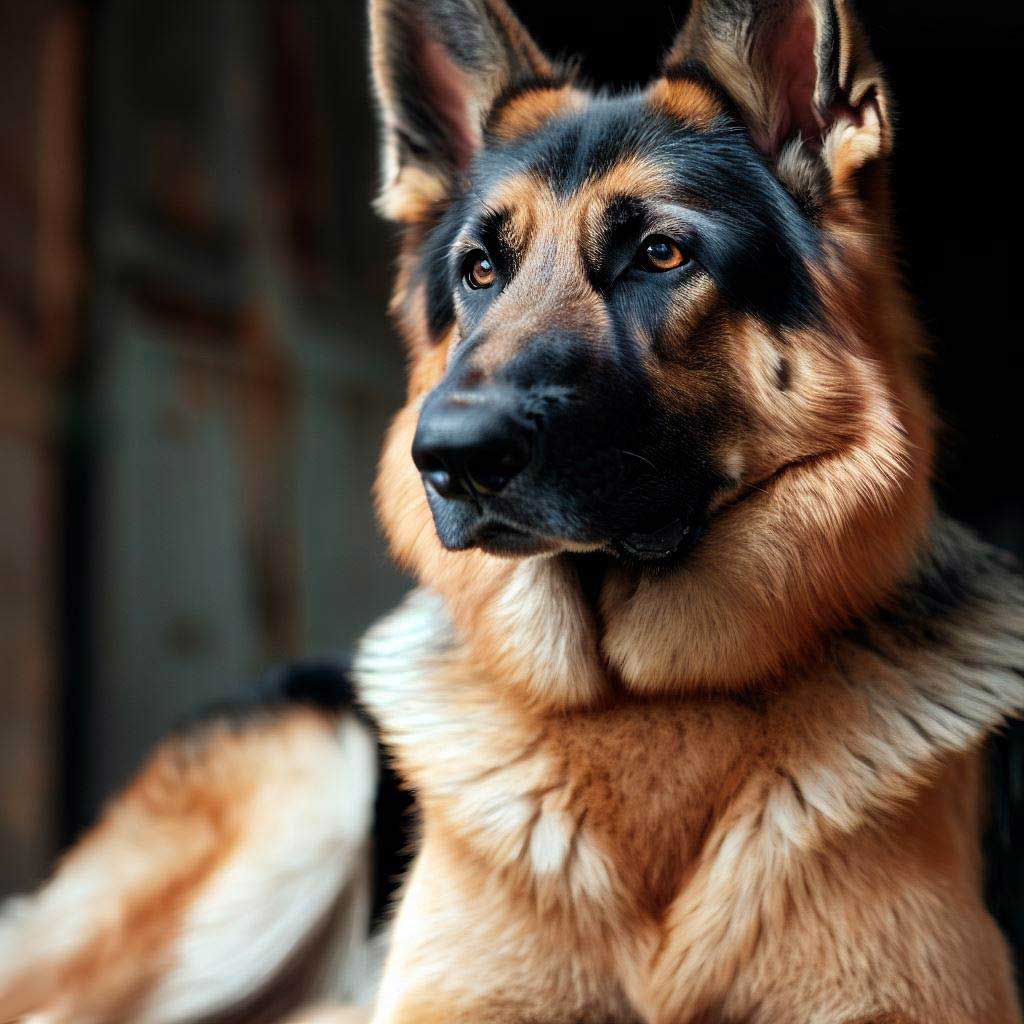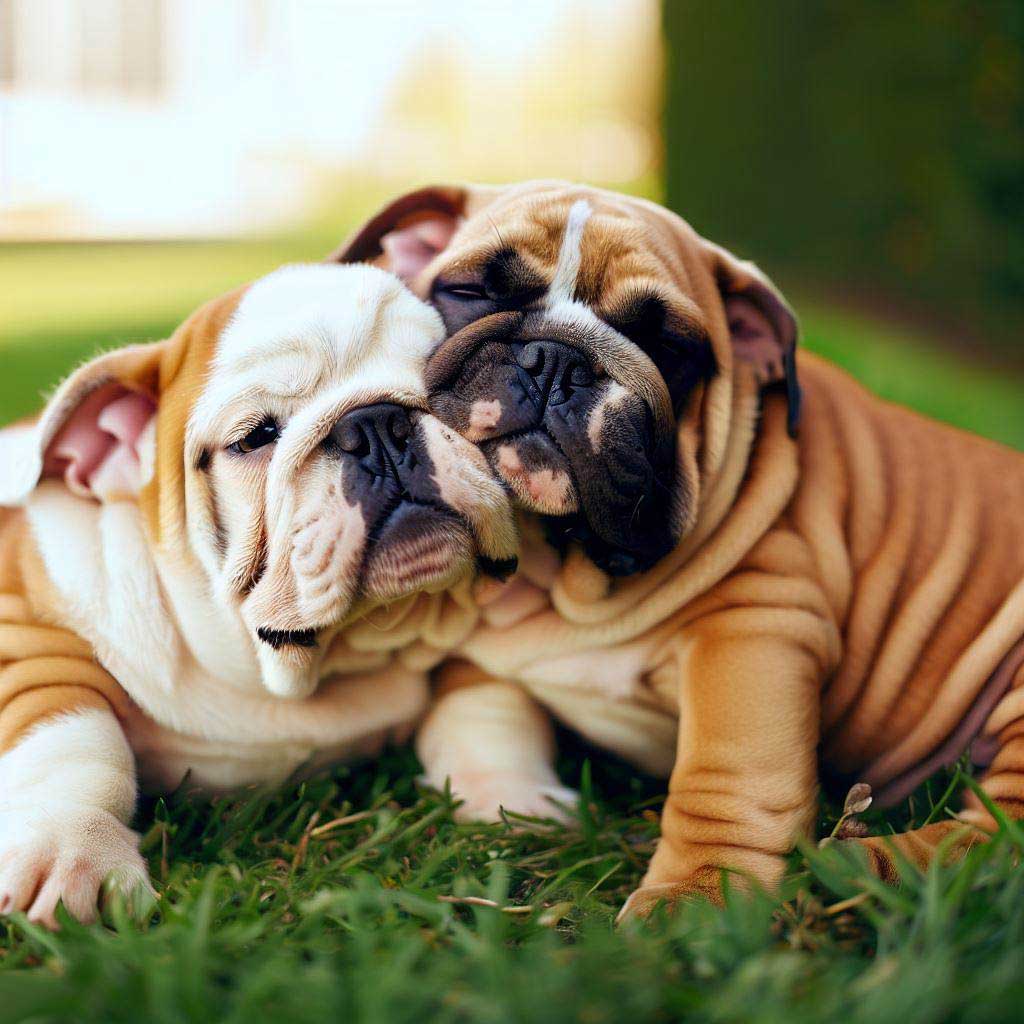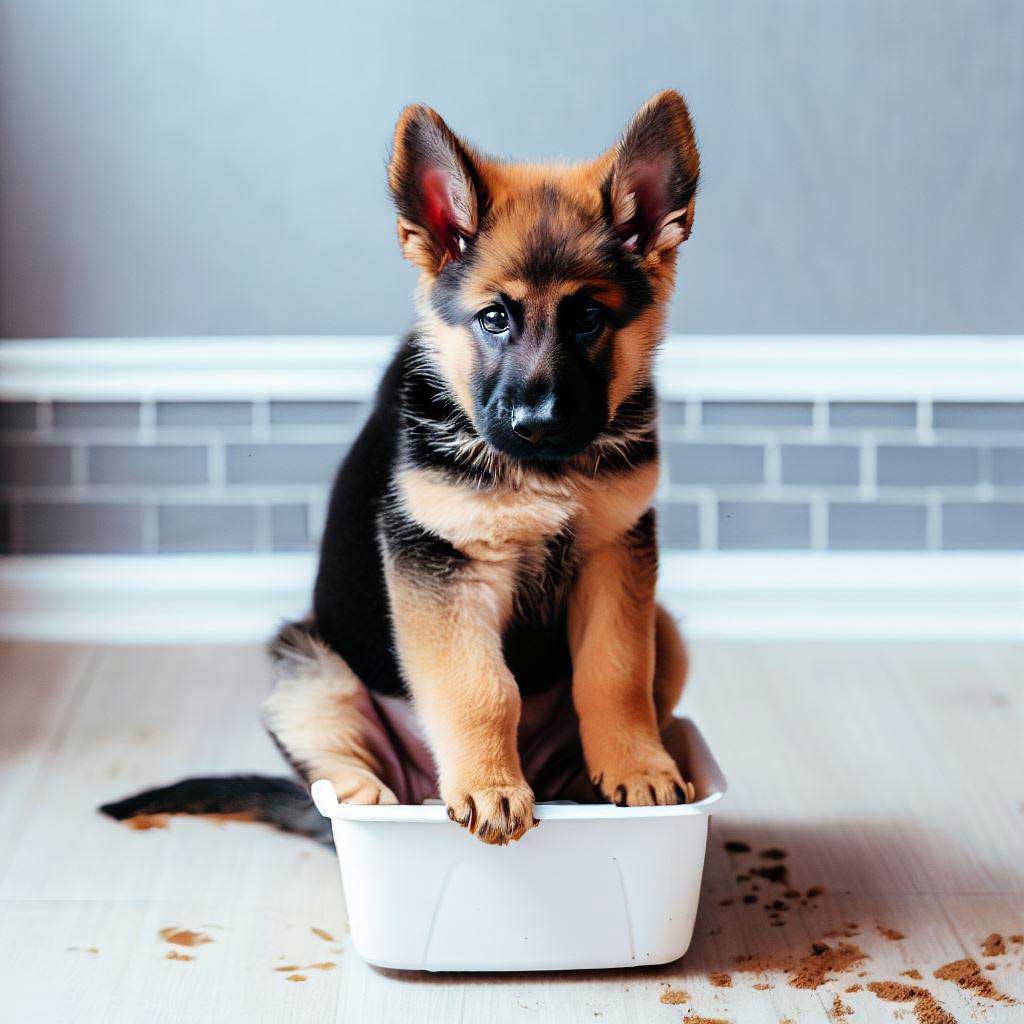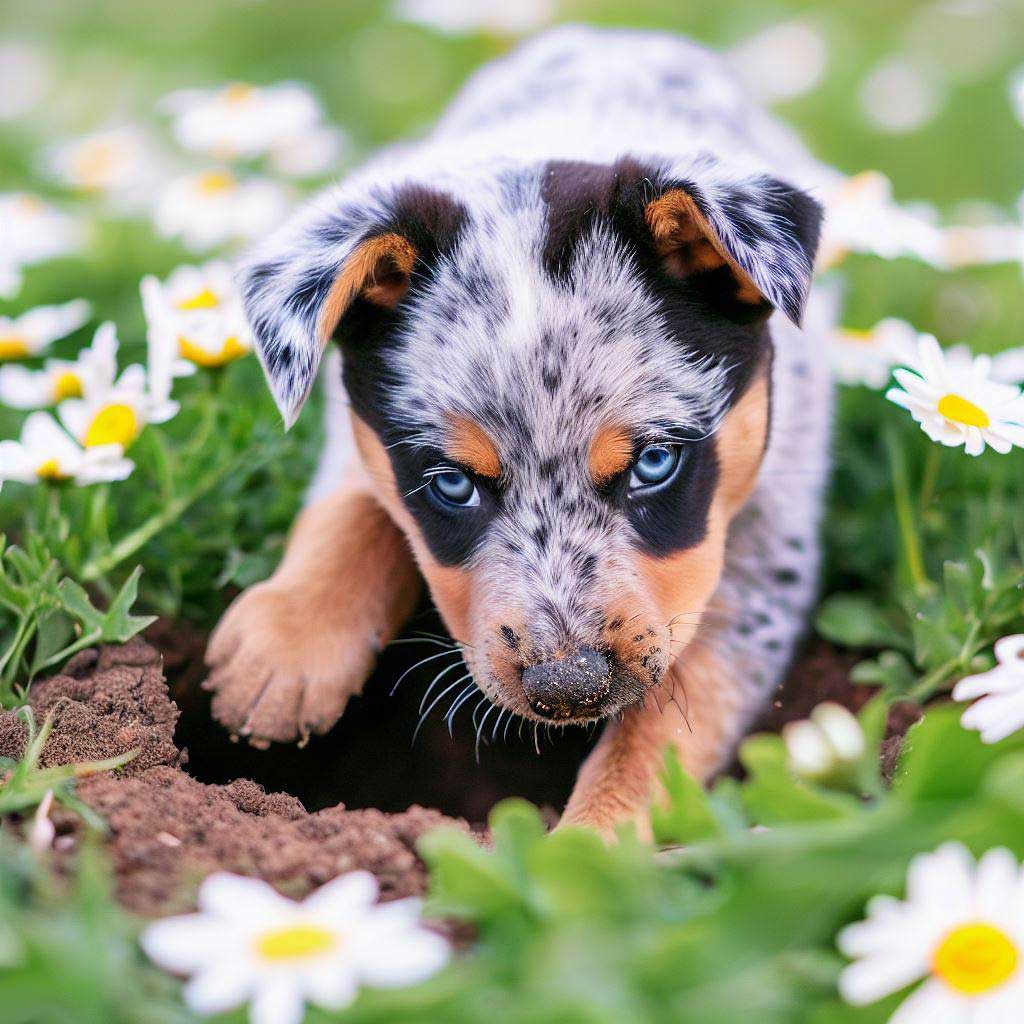Table of Contents
ToggleHow to Calm an Aggressive Dog: 11 Proven Ways that work. Master the art of dog behavior modification with our easy-to-follow guide.
How to Calm an Aggressive Dog for a Happier Home
So, you think you know dogs? Your pooch might be all wagging tails and sloppy kisses around you, but what happens when Fido flips a switch and goes into snarl mode? Canine aggression is more than just a random tantrum; it’s a complex issue woven into the tapestry of dog behavior. Imagine this: you’re taking a leisurely walk, leash in hand, and suddenly your dog lunges, teeth bared, at a passing pedestrian. Heart-pounding, right? Yet, it’s a wake-up call for pet owners to understand that aggression isn’t just bad manners but a legitimate safety concern for both humans and canines.
Recognizing the Importance of Calming Canine Aggression
You love your dog, of course. But what if that affectionate furball becomes a threat to a child, another pet, or even you? The stakes are high, making the importance of understanding and mitigating aggressive behavior monumental.
Now, let’s bring something crucial into the equation: positive reinforcement dog training. Forgo the outdated, punitive methods. Positive reinforcement, my friends, marks the difference between a dog conditioned to suppress aggression and a dog taught to replace it with favorable behavior. Both for the immediate safety and the long-term emotional health of your furry friend, knowing how to calm an aggressive dog is not just valuable—it’s essential.
So, as we delve into this topic, think beyond the fur and wagging tails. Understand that underneath the lovable exterior is a nuanced creature, hard-wired with instincts and emotions we must respect and manage responsibly. Make no mistake, the onus of fostering a safe environment for our four-legged pals—and everyone who comes into contact with them—lies squarely on our shoulders.

Recognizing Signs of Aggression
Listen up, because your dog is talking! Well, not with words per se, but through an intricate dance of vocal, physical, and behavioral cues. Missed these signs? They might spell danger or even disaster. Yes, let’s decode the growls, the stares, and the mysterious pacing.
Verbal Cues: Growling, Snarling
First on the radar? Vocalization. A growl isn’t always a growl. Confused? Sometimes a dog growls during play; other times, that growl means business. Snarling takes it up a notch; consider it a growl with an exclamation point. Your dog’s trying to communicate its discomfort or threat level. Hear that growl? Stop! Take notice. Snarl detected? Immediate action is necessary. Remember, when handled right, positive reinforcement dog training can transform these vocal expressions into more peaceful communication. Isn’t it fascinating to realize that your dog is speaking a language you can actually understand?
Physical Cues: Raised Hackles, Bared Teeth
Now, let’s delve into the nitty-gritty of physical signals. Ever noticed your dog’s hackles go up? Like a real-life emoticon, raised hackles could mean anything from excitement to terror. Context is king! How about bared teeth? It’s the doggie equivalent of shouting, “Back off!” Yet, bear in mind, sometimes dogs bare their teeth when grinning. Yep, they grin. But don’t be fooled; understanding the context could mean averting a crisis.
Behavioral Cues: Pacing, Avoiding Eye Contact
Last but far from least, we’re diving into behavioral cues. See your dog pacing back and forth? That’s not aimless wandering; it’s a red flag! Pacing often signals stress or anxiety, which can escalate into aggression if not addressed. Another cue—avoiding eye contact. Think about it; when was the last time you avoided someone’s gaze? Probably when you didn’t want to engage. It’s the same for dogs. In fact, direct eye contact in the dog world can be a power play, so if your pooch is avoiding your gaze, they might be signaling submission or even fear.
Alright, folks, keep these cues at your fingertips. Incorporating them into a positive reinforcement dog training regime can make all the difference in preempting aggressive behavior. Just a heads-up: misinterpreting these signs might lead you down a rabbit hole of behavioral issues, making your how to calm an aggressive dog-training journey more complicated than it needs to be.
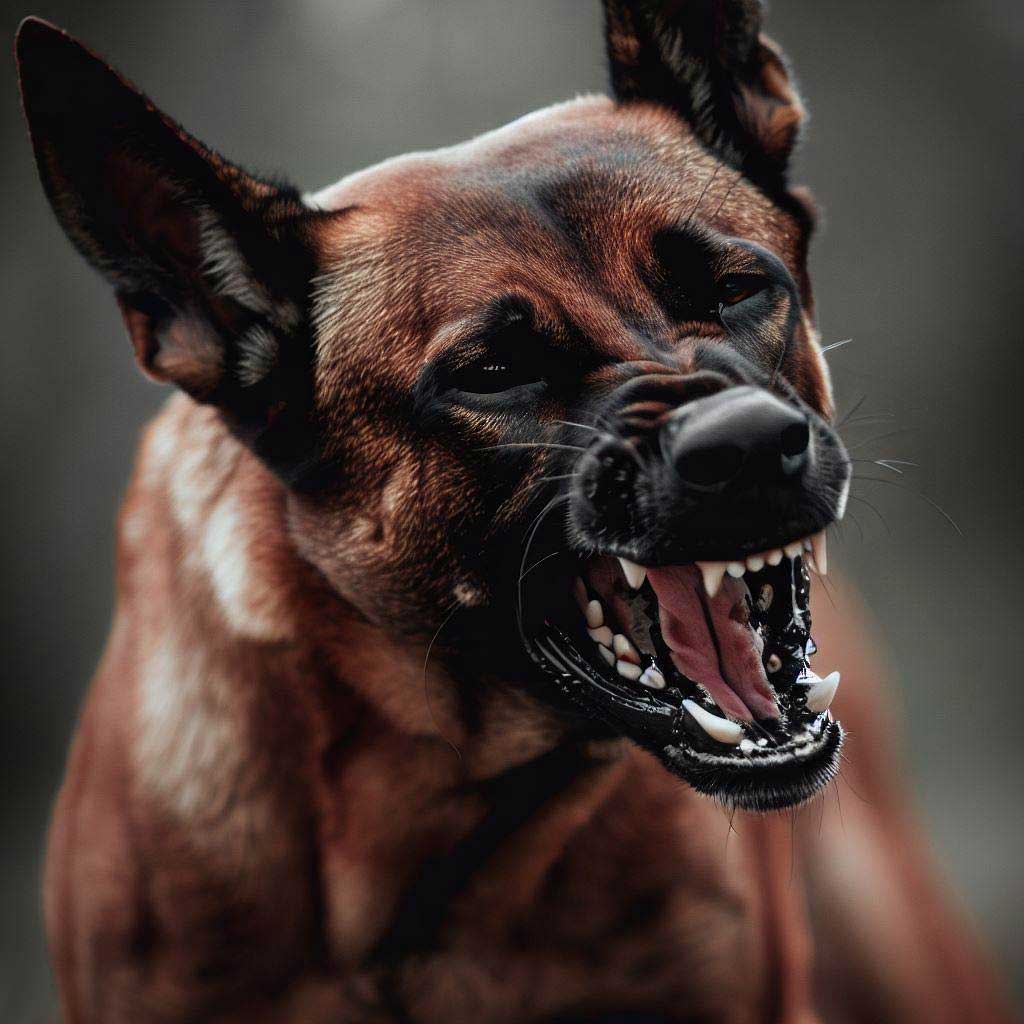
Common Causes of Aggressive Behavior
Hold that leash tight; we’re about to delve into the labyrinthine world of canine aggression. Why? Because understanding the root causes is half the battle won. The triggers? They’re as varied as dog breeds themselves. So, sit. Stay. Read on.
Genetic Predisposition
Ever heard of a “naturally aggressive breed”? Forget that outdated stereotype for a moment. Genetic predisposition to aggression isn’t breed-specific. However, it’s a factor, a loaded gun that environmental triggers can fire. Some dogs come hardwired to react aggressively under specific circumstances. Fascinating, isn’t it? The family lineage can be a Pandora’s box of traits, including aggression. But remember, positive reinforcement dog training can often rewire these genetic circuits. Yep, you read that right.
Environmental Triggers
Next stop, environmental triggers! Picture this: A dog exposed to violence becomes violent. Surprised? You shouldn’t be. Dogs learn by observing, just like us. Neglected or exposed to constant threats, their aggression becomes a defense mechanism. In urban spaces, even noisy traffic or crowded parks can trigger aggression. Simply put, their environment becomes a minefield of stressful stimuli. Yet, with proper training and socialization, these triggers can often be neutralized.
Past Trauma or Abuse
Ah, the ghost of the past! Just like you wouldn’t forget a traumatic incident, dogs have a memory too. Abuse, neglect, or even a single frightening experience can become deeply ingrained. Later, any situation resembling that past trauma could trigger aggression. Addressing this requires patience and, you guessed it, positive reinforcement dog training. The goal? Replace the old, traumatic associations with new, positive experiences. It’s challenging but achievable.
Medical Issues
Last but not least, the medical facet. Picture this: You’re in pain but can’t articulate it. Aggravating, right? Dogs feel the same. Medical issues like chronic pain, hormonal imbalances, or even vision loss can make your pooch irritable. Hence, sudden aggression might just be a cry for help. Consulting a vet can help pinpoint medical causes, providing you an avenue for targeted intervention.
Crucially, diagnosing the cause of aggression helps tailor the solution to how to calm an aggressive dog. One size doesn’t fit all, and this is particularly true when it comes to dog behavior. Whether it’s genes, environment, trauma, or health, each cause necessitates a different approach. So keep your eyes peeled, your ears open, and your mind ready for the enlightening journey ahead in decoding your dog’s aggression.
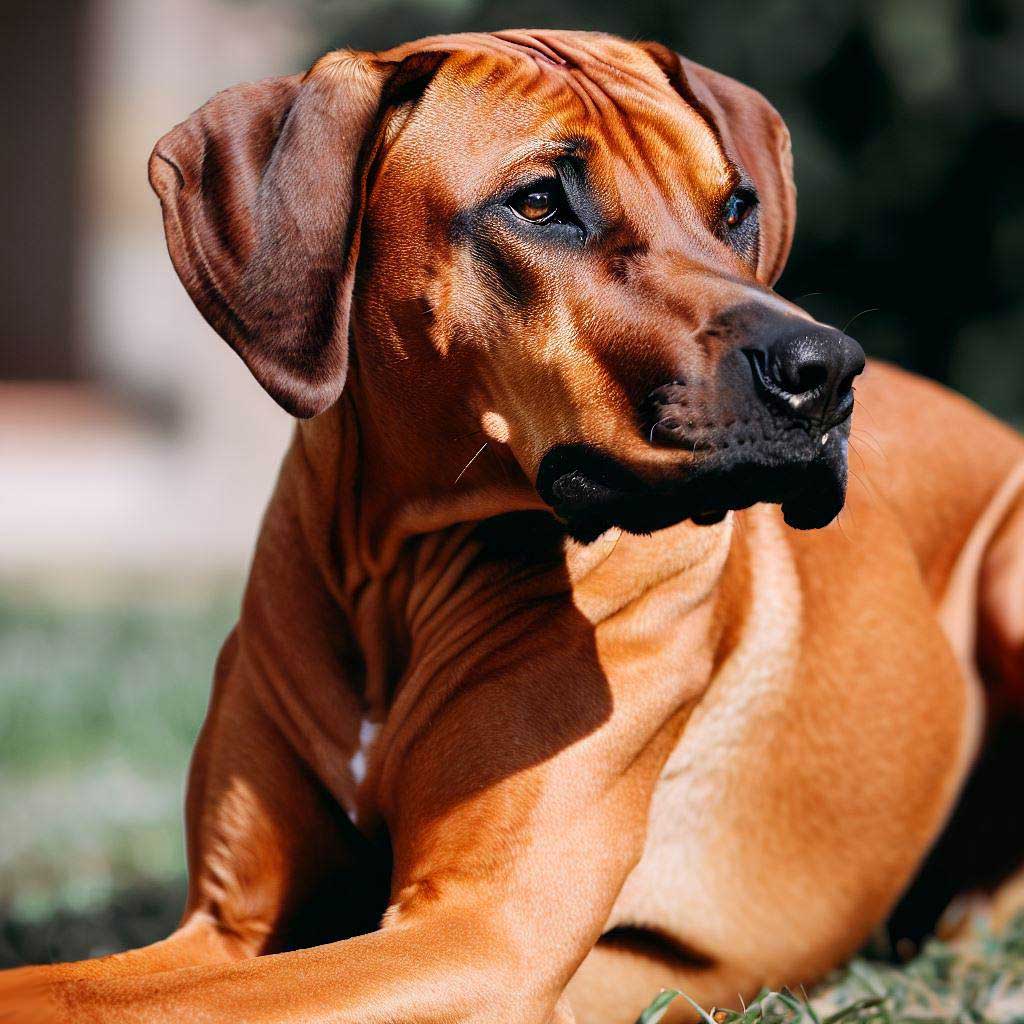
When to Consult a Veterinarian
Let’s get down to brass tacks. You’ve tried to decode your dog’s behavior, even dabbled in positive reinforcement dog training, but the aggression persists. Frustrated? Hold on. It might not be a mere behavioral issue; something deeper could be lurking. When do you ring the vet’s office? Let’s jump in.
Rule out Medical Causes for Aggression
Picture this: Your amiable Fido suddenly morphs into Cujo. Out of the blue, no warnings. Shocking, right? First things first, rule out medical causes. Even minor ailments like toothaches or ear infections can make your canine companion downright irritable. Remember, dogs don’t speak ‘human.’ When they’re in discomfort, growls and snaps may be their only way to say, “Hey, something’s not right!”
More serious medical issues could be at play too. Tumors, thyroid imbalances, and neurological disorders can trigger aggression. In such cases, behavioral cues can be red flags signaling the need for immediate medical attention. Here, no amount of positive reinforcement dog training will solve the problem until the underlying condition is treated. Got it? Medical first, training next.
When Behavior is Severely Affecting Quality of Life
Another red flag is when your dog’s aggression reaches a point where it severely impacts the quality of life—for the pet and for you. Maybe walks have become a battlefield, or perhaps your dog can no longer interact safely with other animals or even your family. In such situations, a veterinary consult is crucial. Why? Because underlying anxieties or phobias may require medication alongside behavior modification techniques. Yes, sometimes a two-pronged approach is essential.
And there you have it. From unexpected aggression to lifestyle compromises, these signs scream for a veterinarian’s intervention. Don’t look at it as a last resort; view it as a holistic part of responsible pet ownership. Before diving into any new training regimen, consult with professionals who can rule out health-related causes. So go ahead, make that call, and give your canine the care it deserves.
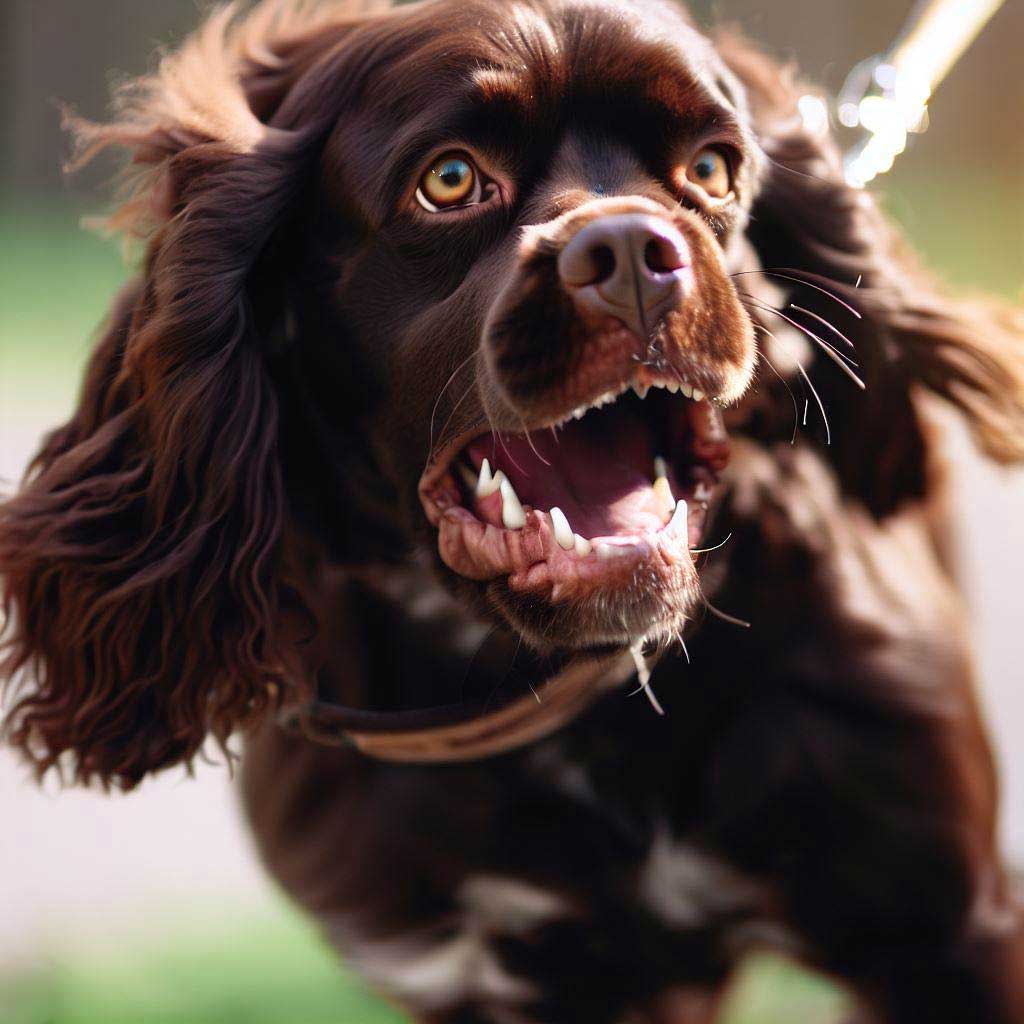
How to Calm an Aggressive Dog: 11 Proven Ways
1. Behavior Assessment and Observation
First off, grab a notebook. You’re about to play detective. Start jotting down instances where your dog shows aggression. Is it during meal times? Or perhaps when a stranger approaches? Understanding your dog’s triggers is crucial. Once you identify the patterns, you’ll be well-armed to introduce interventions. Indeed, recognizing the ‘why’ behind the aggression paves the way for effective positive reinforcement dog training.
2. Positive Reinforcement Training
Let’s dive into the realm of treats, toys, and heaps of verbal praise. Positive reinforcement training isn’t just a catchphrase; it’s a scientifically-backed method. Reward your dog when they behave well. Give them a treat or a toy they adore, and you’ll see, in time, they’ll associate calm behavior with positive outcomes.
3. Counter-Conditioning
Take note: you’re not merely stopping aggressive behavior; you’re replacing it. With counter-conditioning, you teach your dog new responses. When your dog growls at another pup, divert their attention. Offer a treat or start a game. The goal is to have them associate the trigger with positive experiences instead.
4. Desensitization Techniques
Fearful of fireworks? Unnerved by strangers? Gradual exposure can be a game-changer. Begin by introducing the ‘scary thing’ at a distance, slowly reducing the space as your dog becomes more comfortable. The aim is to desensitize them to the trigger, decreasing the aggressive response over time.
5. Time-Outs and Safe Spaces
Time-outs aren’t just for toddlers. When Fido starts to lose his cool, introduce a ‘time-out’ zone. It’s a space filled with comforting items: a favorite toy, a soft blanket, perhaps even some calming dog-specific music. It’s not punishment; it’s a sanctuary where they can regroup.
6. Clicker Training
In the world of instant gratification, a clicker can be magic. As soon as your dog exhibits good behavior, click! Pair it with a treat or praise. The immediate positive reinforcement solidifies the good behavior in their mind.
7. Dog-On-Dog Socialization
Ever seen dogs at the park, happily playing, and wish yours could join in? Proper dog-on-dog socialization is an art and a science. Introduce your dog to others cautiously and in a controlled environment. Over time, they’ll learn to communicate better, reducing aggressive outbursts.
8. Medication and Supplements
If the aggression stems from a deeper, perhaps even neurological issue, medication can be a viable path. However, it’s not a quick fix but rather an avenue to explore under strict veterinary supervision. Supplements like CBD oil and pheromone diffusers can also act as a bridge to more balanced behavior.
9. Leash Training and Muzzle Use
When all else fails, consider leash training and perhaps even a muzzle for short periods. A sturdy leash allows you to control your dog better, mitigating any sudden aggressive moves. And remember, a muzzle isn’t a sign of failure; it’s a safety tool for you and those around you.
10. Professional Assistance
Hitting a wall? Before you throw in the towel, consider elevating your strategy. Professional help is often the missing link in mastering canine behavior. Opt for a seasoned dog trainer or behaviorist—especially one versed in positive reinforcement dog training. These experts can reveal nuances in your dog’s behavior you might’ve overlooked.
But what if you’re on a budget or prefer a more hands-on approach? Good news: DIY online training could be your hidden gem. Don’t miss our curated article, “Best Online Dog Training Courses: Any Dog Will Love.” This guide filters through the noise, highlighting the top 3 out of 15 invaluable online resources. It might just offer the breakthrough you’ve been searching for.
11. Consistency and Routine
Let’s circle back to square one. You’ve got a host of techniques at your disposal. Brilliant! But none of it will stick without consistency. Dogs are creatures of habit. The more you repeat a routine, the more it solidifies in their behavior.
Now, remember, this is not a sprint; it’s a marathon. Calming an aggressive dog requires time, patience, and a lot of love. But armed with these proven strategies, you’re well on your way to fostering a healthier, happier relationship with your canine companion.

Best 5 Tips and Tricks for Calming an Aggressive Dog
So, you’ve got an aggressive dog on your hands. Don’t fret! There’s a toolkit of effective methods that can turn the tide. But first, let’s make one thing clear: No two dogs are the same. Therefore, customizing your approach is essential. Ready? Dive in.
- Use high-value treats for positive reinforcement: Don’t underestimate the power of a good treat. Dogs love them, obviously. But did you know high-value treats can transform your training sessions? Here’s the kicker—these aren’t your regular kibble. Opt for treats that are soft, stinky, and irresistible to your pooch. Think of it as positive reinforcement dog training on steroids. Reward calm behavior and watch how this seemingly simple trick becomes a game-changer.
- Employ “baby steps” in desensitization techniques: Go slow. We’re talking snail pace slow. Patience isn’t just a virtue; it’s a necessity when calming an aggressive dog. Begin with non-threatening stimuli that mildly trigger aggression. Gradually introduce more challenging situations, all while reinforcing positive behavior. Yep, it’s a tightrope walk, but one that can drastically reduce aggressive outbursts.
- Maintain Controlled Environments: Often overlooked, the setting plays a crucial role. An overstimulating environment can throw your efforts to the wind. Therefore, opt for a calm and quiet locale, especially during the initial stages of desensitization. Controlled environments make your dog feel secure, thereby aiding your training efficiency.
- Use distraction methods effectively (toys, commands): Fetch, sit, stay! Commands and toys are more than just fun and games; they’re excellent distractors. When your dog starts showing signs of aggression, divert their attention. Toss a ball or issue a command. The goal? Break the cycle of aggression before it escalates. Mastering this art of distraction can be your secret weapon.
- Invest in a Weighted Dog Blanket: Think weighted blankets are only for humans? Think again. Dogs, especially the anxious ones, benefit from the deep touch pressure these blankets provide. It mimics the feeling of being held, helping your dog relax and focus better during your positive reinforcement dog training sessions.
Count yourself armed. With these strategies in your back pocket, you’re not just managing aggressive behavior—you’re rewriting your dog’s emotional script.
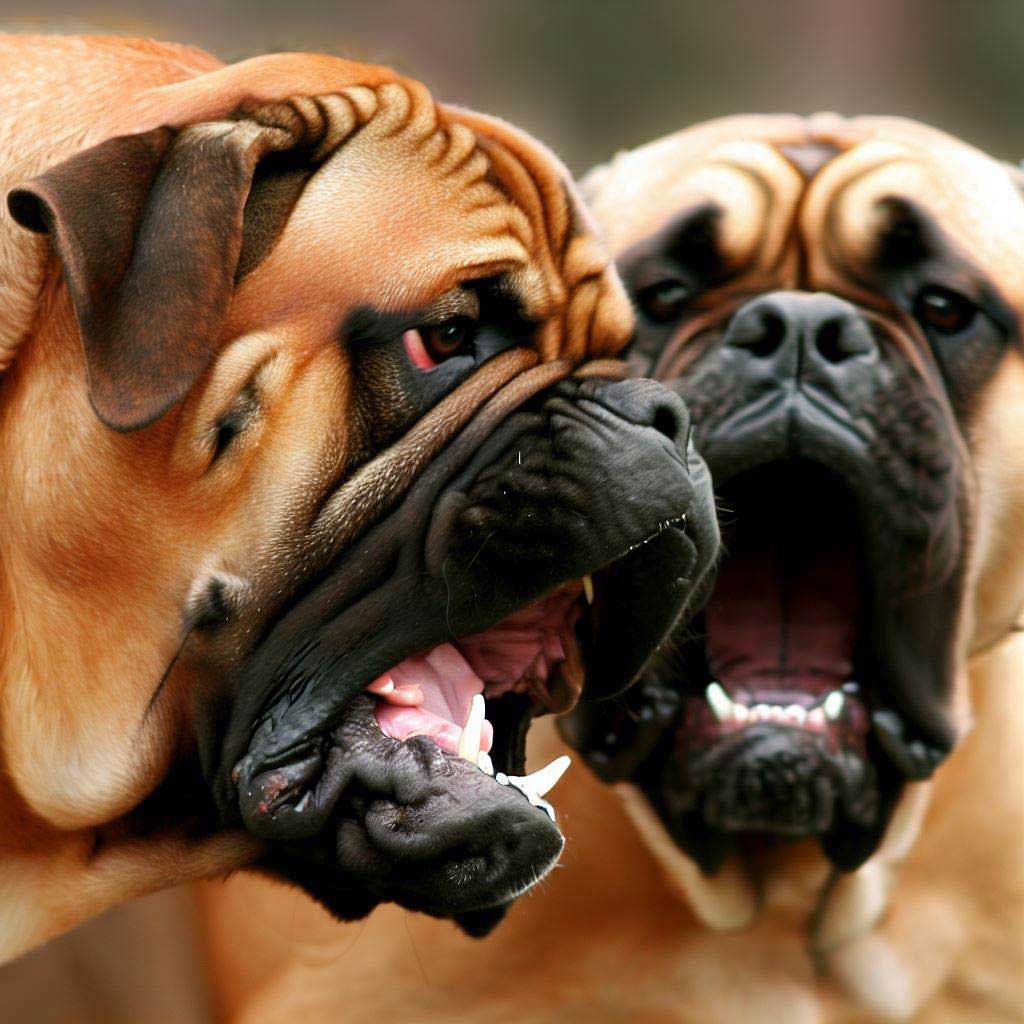
Conclusion: How to Calm an Aggressive Dog
Summary of Key Points
Okay, let’s hit the highlights. You’ve navigated the maze of canine communication, from the subtleties of a wagging tail to the blaring alarm bells of raised hackles. Delving into the root causes of aggression, whether it’s nature or nurture, illuminated the canvas. How to Calm an Aggressive Dog? It’s not a Google search; it’s a journey. You’ve learned the transformative power of positive reinforcement, counter-conditioning, and even medication when needed. Let’s not forget leash training, routine consistency, and the significance of professional guidance.
Take Action and Consult Professionals for Severe Cases
Action, that’s the keyword here. Reading this guide makes you informed; applying the knowledge makes you wise. Yes, grab those high-value treats, that clicker, and take a deep dive into the world of positive reinforcement. Train, observe, and adjust. But listen, if things are veering off the track, if the aggression isn’t just a phase but a persistent issue, you have a lifeline—professionals.
Doubtful? Remember, even the most obstinate canine issues are not set in stone. Experts specialize in challenges like these, and they can be game-changers. Your situation may call for a behavioral reset that only a professional can provide. Don’t neglect the fantastic resource that is our guide on “How to Calm an Aggressive Dog” either; it’s a treasure trove, believe it. So, take a leap; the net will appear. Make that call, schedule that appointment, change a life—yours and your dog’s.
Go on, be the catalyst of change for your four-legged friend.
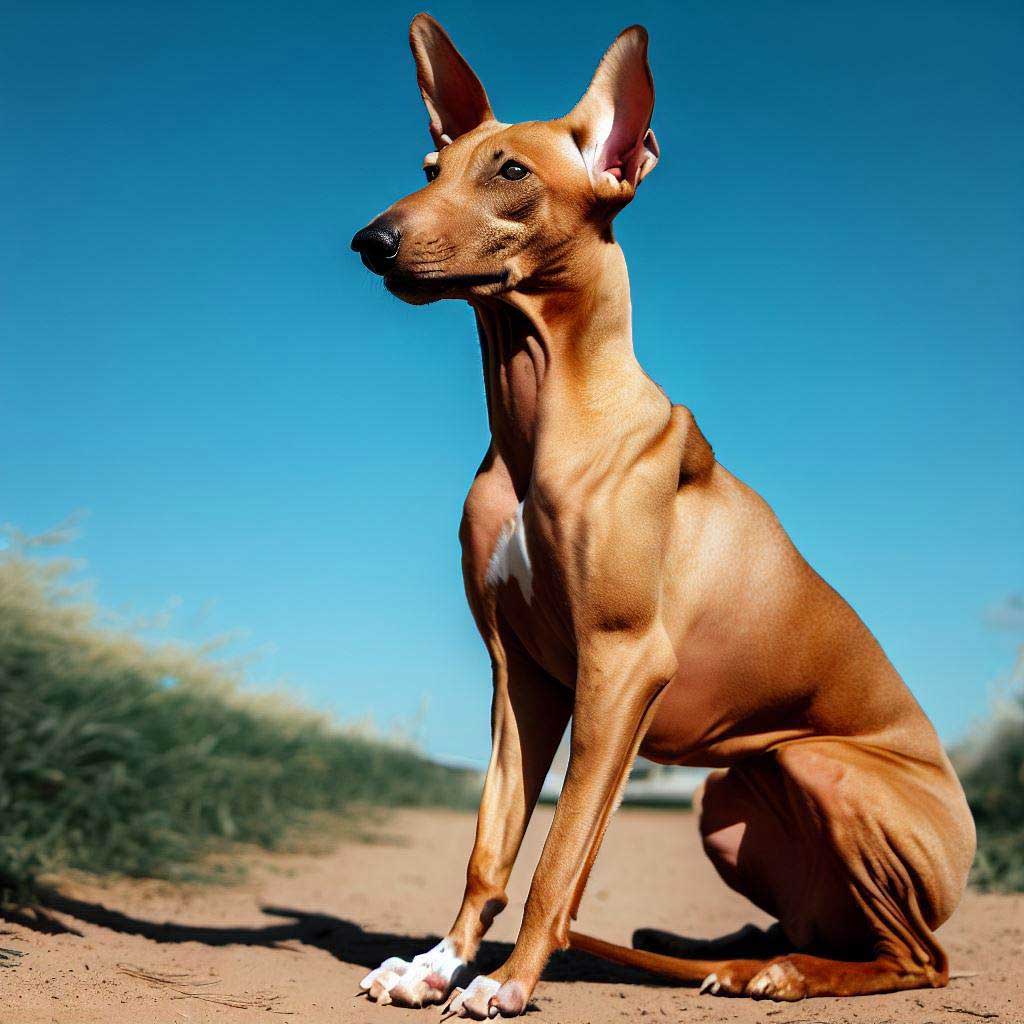
FAQ: How to Calm an Aggressive Dog
How quickly can I expect to see changes in my dog’s aggressive behavior?
Expect variation. Some dogs respond within weeks to positive reinforcement and training; others may take months. It depends on the severity of the aggression and your consistency in applying training techniques. However, remember that consulting a professional is often the fastest route to substantial, lasting change.
Are certain breeds more prone to aggression?
Indeed, some breeds are genetically predisposed to be more assertive or protective, which can translate to aggression. But don’t forget, it’s not all in the genes; upbringing and environment significantly shape behavior. So even for these breeds, knowing how to calm an aggressive dog is invaluable.
Can an old dog with aggressive behavior be trained?
Absolutely. Age is just a number when it comes to positive reinforcement training. Yes, it might take longer, and the learning curve could be steeper, but change is possible. Professional intervention may make the process smoother and quicker.
How can I tell if my dog’s aggression is medically related?
Look for sudden changes in behavior, diminished energy, or other physical signs like limping. If any of these symptoms occur alongside aggression, a vet check is crucial. Medical issues can cause discomfort and make your pet more irritable or aggressive.
What should I do if my dog bites someone?
Immediately secure your dog to prevent further harm. Administer first aid to the victim and consult a medical professional. Then, consult a veterinarian and a behavioral expert to assess why the bite happened and to formulate a preventive strategy moving forward.
How do you get a dog to stop being aggressive?
Consistency is key. Use positive reinforcement and counter-conditioning methods to replace aggressive actions with favorable behavior. You might need to tailor your strategy to your dog’s specific triggers and inclinations. Always be patient and persistent.
Why would a dog become aggressive?
Aggression stems from various factors—territorial issues, fear, past trauma, or even medical conditions. Identifying the cause is the first step in effectively mitigating the aggression.
Can you help a dog with aggression?
Yes, most aggressive dogs can be helped with a combination of professional guidance, positive reinforcement, and sometimes medication. However, the approach varies depending on the underlying cause.
Can you trust a dog after it bites?
Trust is a two-way street. Understand why the bite happened, correct the triggers and behavior, and gradually rebuild trust through training and positive interactions.
How do you discipline a dog for snapping?
Avoid punishment as it can worsen aggression. Instead, use positive reinforcement techniques to reward good behavior and employ time-outs to de-escalate tense situations.
When should you put down an aggressive dog?
Euthanasia is typically a last resort and should only be considered after exhaustive efforts to manage the aggression have failed and if the dog presents a persistent threat to humans or animals.
Will a vet put down an aggressive dog?
Vets usually reserve this for extreme cases where the dog poses a significant, unmanageable risk and all other avenues have been explored and exhausted.
How do you socialize an aggressive dog?
Carefully and gradually. Exposure to new environments and other dogs should be slow, controlled, and always under the supervision of an experienced handler.
Should you tell a dog off for snapping?
Reprimanding can backfire, further entrenching aggressive behaviors. Employ positive reinforcement techniques instead to encourage good behavior.
How do you show dominance to a dog?
Dominance theory is largely debunked. Instead, focus on fostering a relationship based on mutual trust and respect through positive reinforcement.
How do you deal with aggression in a dog at home?
Implement a tailored training plan using positive reinforcement techniques and provide a safe space where the dog can retreat when stressed. Consulting professionals can help fine-tune your approach.
What is an aggressive dog’s body language?
Raised hackles, stiff posture, intense staring, and growling are signs to watch out for. Understanding these cues is crucial in preempting aggressive behavior.
What should you not do after a dog fight?
Avoid immediate close contact with either dog as emotions run high and redirected aggression can occur. Consult a professional for a post-incident behavioral assessment.
What is the dog calming code?
It’s a set of cues and behaviors that dogs use to communicate peaceful intentions and defuse tension, like yawning, lip licking, and turning away.
What are 5 calming signals in dogs?
Common ones include yawning, turning the head away, licking lips, slow movement, and lifting a front paw.
Can you get calmers for dogs?
Yes, various over-the-counter and prescription calmers exist, but always consult your vet before starting any medication.
How do you send calming signals to a dog?
Mirror your dog’s calming signals, like yawning or turning your head away, to show you mean no harm and defuse tension.
Some further reading that may interest you:
No dog is beyond redemption, especially when it comes to rescue pups. These dogs often come from challenging backgrounds, carrying emotional or behavioral baggage. But that shouldn’t deter you. With the right combination of love, patience, and technique, you can turn any rescue into a loyal, loving family member. Dive into “Training Rescue Dogs: A Guide to Second Chances” for actionable insights on reshaping negative behaviors and fostering a bond of trust.
If you’re a dog lover fascinated by the psychology of training, then you’ve hit the jackpot! Whether you’re dealing with a stubborn husky or a timid terrier, understanding the underpinnings of canine behavior can set you on the path to training success. Unlock the keys to decoding your dog’s mind and optimizing training techniques for any breed or age. For a comprehensive look at what really works, check out “Best Dog Training Methods: Unlocking the Secrets.”
